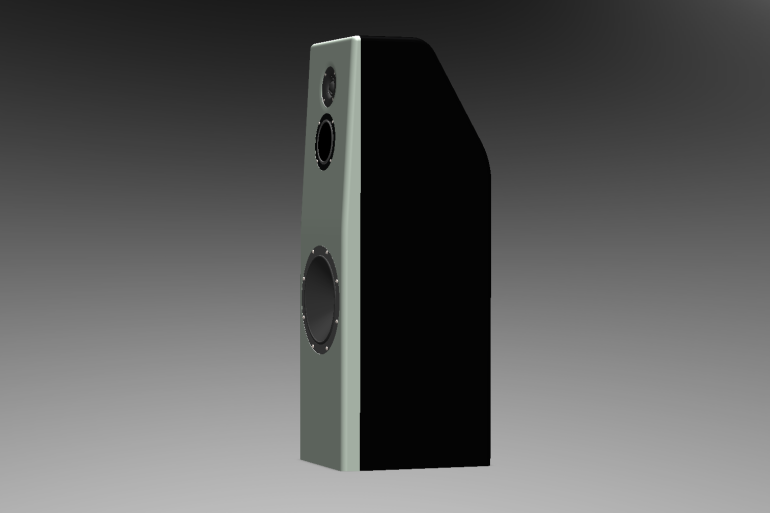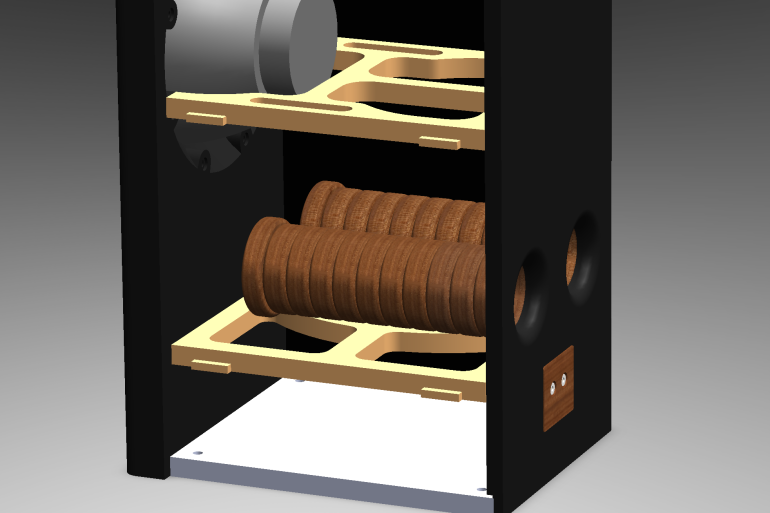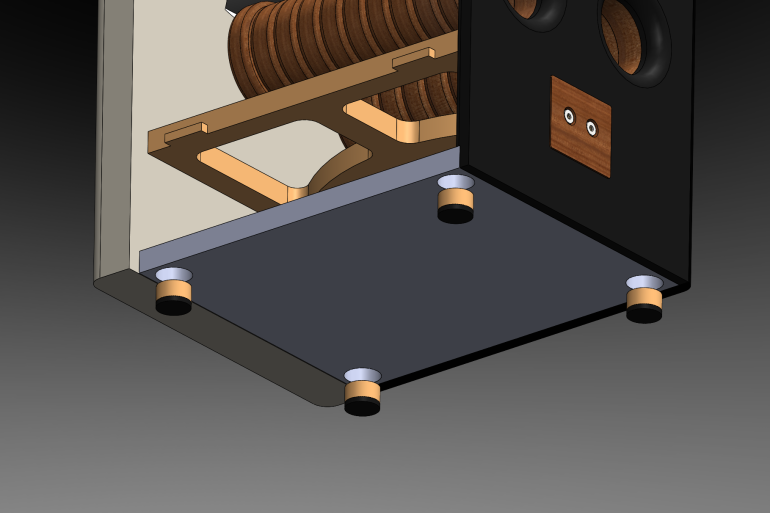The first thing your ears register—before tone, before bass—is timing. When the leading edge of a drum hit or piano hammer arrives in one clean packet, your brain stops working and starts listening. The BV Audio Reference A embeds that sensation in its geometry. The front baffle is set at...
BV Audio's "Reference A" was born from a workflow that treats Hi Fidelity like a high craft. Generative exploration, diffraction studies, fluid modeling for the ports, panel analysis, and old-fashioned listening sessions all had a say. The goal wasn’t to chase a brand or a graph; it was to make a tower that would sit comfortably in the company of five-figure competitors and make a persuasive case for itself in the first minute—and the fiftieth. It plays with real sensitivity and a benign load, so honest amplifiers sound bigger and more relaxed than you expect. Push the level and the system scales without hardening; play late at night and the micro-stuff—the breath, the brush, the hall—stays intact.
The first thing you notice about Reference A isn’t the spec sheet. It’s the poise. The cabinet stands with the quiet confidence of a concert instrument, its front panel gently canted like a musician leaning into the downbeat. That forward lean is no stylist’s whim: it’s how the acoustic centers of the drivers meet the ear at precisely the same moment. The result is time that sounds like time—snare cracks that startle, piano hammers that bloom and vanish in one unbroken gesture, a phantom center that refuses to let go even as you drift across the sofa.
Down low, this loudspeaker behaves like it has nothing to prove and plenty in reserve. Bass reaches with pitch and texture, not just weight; the kick drum starts and stops as if tethered to the fader. A big part of that calm is the porting: not commodity plastic, not ringing metal, but meticulously machined wooden ducts with generous internal and external flares. Their geometry was sculpted to keep airflow laminar at real listening levels, so there’s no huff, no whistle, no hint that the bass is anything but a natural extension of the recording. You hear music, not plumbing.
Walk around it and the silhouette keeps unfolding. The rear panel flows in a graceful arc, softening the mass without stealing a millimeter from the physics. The midrange lives in its own sealed and felt-lined chamber, so the most human octaves stay free of box signature and stored energy. Up top, a carefully profiled waveguide shapes the treble’s power into the room, trimming the little diffraction halos that make some speakers sound impressive for five minutes and exhausting by track three. Reference A stays open, stable, and lucid, night after night.
The enclosure itself is built to disappear. Layers, bracing, and selectively lossy interfaces work together to shove panel modes down into the noise floor, letting the drivers do the speaking and the cabinet keep its counsel. Underneath, the foundation is just as intentional: integrated, decoupled feet sit in visco-damped pockets with spike-ready metal inserts. They couple energy to the floor while insulating the cabinet from the little feedback loops that smear timing and blur images. It’s the kind of detail you stop thinking about once you hear what it does—clarity with body, immediacy without edge.
Finish it how you like. Piano Black and Piano White come standard, deep and mirror-flat. Real veneers and custom colors are available for rooms that ask for something warmer or more personal. Behind the cosmetics, every Reference A is cut, machined, and assembled with a small-batch mentality: consistent where it matters, human where it counts.
If you’ve been waiting for a loudspeaker that breathes like a live room, images like a mastering suite, and carries low-end authority without a sub, you’ve just found it. Reference A isn’t about playing louder—though it can—it’s about playing truer. Sit down, press play, and let the room fall away.
What makes it different (highlights)
Designed for the stage, not the spec sheet. Simulation-driven acoustics (diffraction, port flow, and panel modes) meet rigorous workshop measurements to deliver effortless scale and precision.
Waveguided treble, stable imaging. A precisely profiled waveguide sets a smooth directivity target, taming edge diffraction and keeping tonality consistent across seats.
Low-distortion midrange you can trust. A sealed, felt-lined pod with a splayed back wall minimizes excursion and stored energy through the vocal band.
Serious low end without strain. Large internal volume plus dual flared ports yield anechoic F3 ≈ 31 Hz and in-room reach to the low-20s—tight, pitch-sure, and fast.
Arrival alignment built in. Physical geometry and fourth-order acoustic targets deliver cohesive, time-clean summation through both handoffs.
Benign to drive. 90 dB sensitivity and a 4 Ω nominal load make real-world amplifiers sing without stress.
Craft details you can hear
Hand-crafted wooden port tubes (not plastic or metal). Each port is machined from hardwood with generous internal and external flares. The geometry is tuned for smooth, separated laminar airflow, suppressing “chuff,” vibration, and the subtle ringing that metal or plastic can introduce. What you hear is bass—not the port.
Integrated, decoupled feet (spike-ready). Hidden wells in the plinth cradle two-piece wooden feet around metal M8 inserts, seated in a visco-damped bed. The result is firm mechanical grounding with cabinet-borne vibration wicked away before it reaches the room.
Refined silhouette with an arched rear. The cabinet’s back wall flows forward in a gentle arc for visual sophistication. The curve begins above the LF volume and doesn’t alter the midrange chamber’s sealed airspace—beauty without acoustic compromise.
Two baffle options, one sonic philosophy.
Standard CLD baffle: a constrained-layer, multi-material sandwich with a viscoelastic core—rigid, high-loss, and impressively quiet.
Mineral composite baffle (upgrade): an ultra-inert, mineral-rich composite front for listeners who want that last degree of image focus and micro-detail.
The sound
Bass: deep, tight, and tuneful—kick transients start/stop without overhang.
Midrange: intimate and unforced—voices and strings sound present, never etched.
Treble: airy yet composed—the waveguide keeps shimmer without glare.
Imaging & timing: the canted front baffle physically time-aligns the drivers, so transients snap into focus, the phantom center locks in, and depth layering holds together even as you move off-axis.
Technology pillars in plain-English
Canted, time-aligned front: Both baffle options share a forward-leaning geometry that physically time-aligns acoustic centers before filtering. The result is cleaner step/burst behavior, seamless crossover handoffs, and a wider, more stable vertical listening window with reduced combing and fatigue.
Controlled Directivity: A carefully shaped waveguide smooths power response and suppresses diffraction, so the room hears the same balance as the sweet spot.
Sealed Mid Pod: A felt-lined, splayed chamber with a specific FEA rendered geometry heavy throat chamfer keeps the most sensitive octaves free of box signature and unnecessary cone motion.
Dual-port LF system (wooden, flared) Two large wooden ducts with generous internal/external flares maintain laminar airflow at high output—low compression, no chuff, no ringing.
Quiet Structure Void-free plywood, strategic damping, and window bracing on visco-elastic islands push panel resonance below audibility—the cabinet doesn’t speak
How the "Reference A" stacks up
Feedback is clear: only speakers well above $10,000 feel like direct peers.





